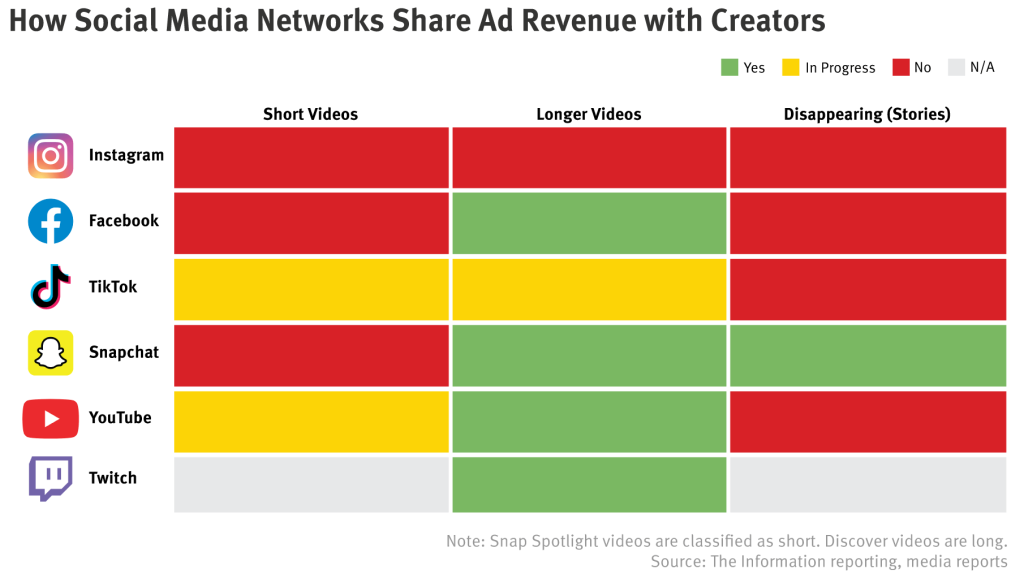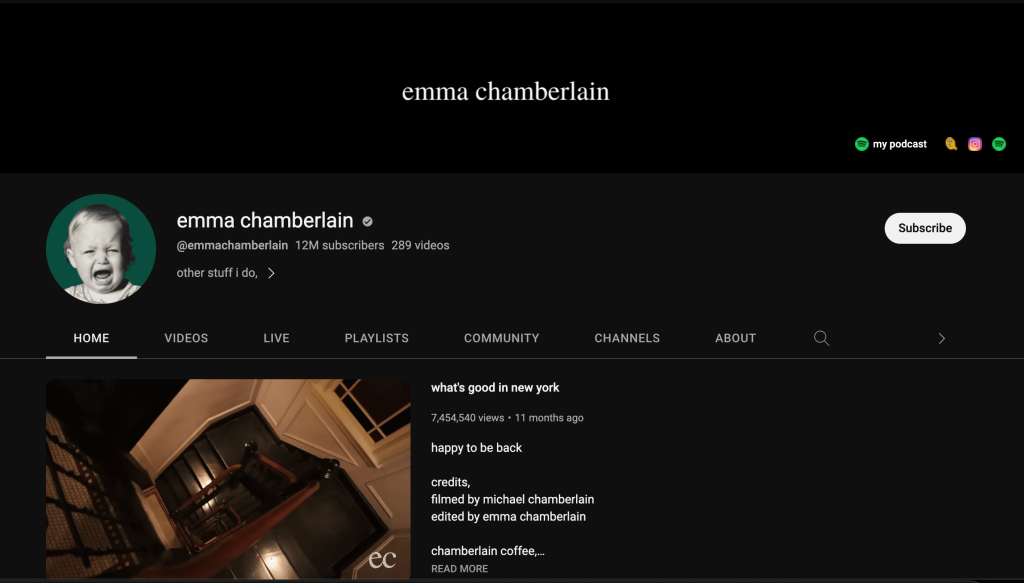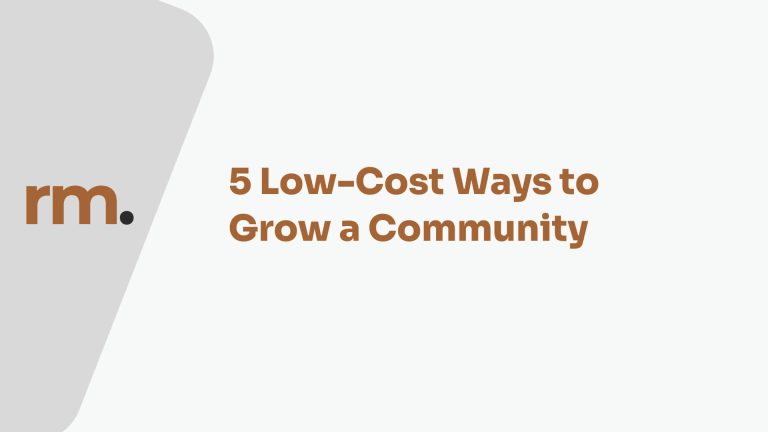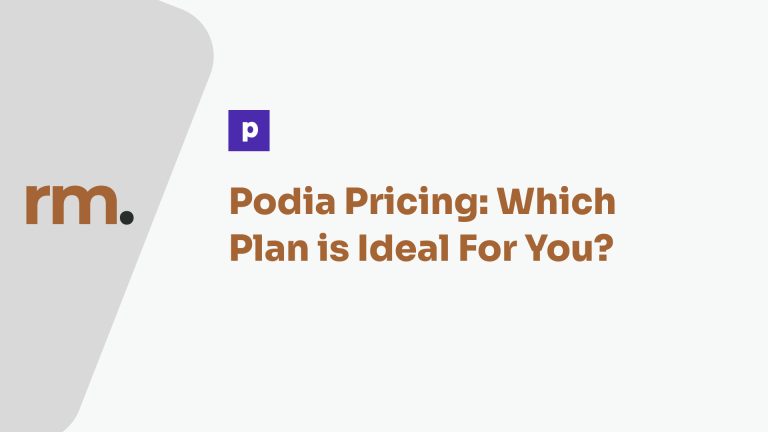Content creation has become a popular career path in recent years, with the rise of social media platforms and digital content consumption.
But ask yourself – how much do content creators earn? Unfortunately, the answer is not always straightforward. Let’s address this in more detail.
How much do content creators actually earn?
The income of content creators can vary greatly depending on factors such as their niche, location, years of experience, and promotional strategy.
According to a HubSpot Blog article, the average salary for content creators in the United States in 2022 was $44,192 per year, with a salary range of $36,000 to $58,500. However, this is just an average, and some top earners can make up to $74,500 annually.
However, here are some interesting stats according to Later’s Creator Rates Report that will give you an idea of how much content creators earn:
- 44% of creators earn over $200 USD from a single Instagram Reel in 2023;
- Creators typically charge a median rate of $700 USD per TikTok video;
- Some creators have reported revenues of $200 to $500 USD per post on LinkedIn, Pinterest, and Twitter.
- both Nano and Micro-influencers are still quite profitable — earning anywhere between $100 USD and $1000 USD for a single Instagram Reel.
One of the most popular platforms for content creators is YouTube. YouTube creators can earn money through various sources, such as advertising revenue, merchandise sales, and sponsorships.
The YouTube Partner Program allows creators to earn money through ads displayed on their videos, with the average rate being $0.01 to $0.03 per view. To be eligible for the program, creators must have at least 1,000 subscribers and 4,000 watch hours in the past 12 months.
However, as illustrated in the table below, it’s important to note that the earning potential of YouTube creators can vary greatly depending on their niche, follower count, and level of expertise.
| Niche | Description | CPM |
| Strategies for Making Money Online | Content focused on generating income online and affiliate marketing strategies. | $13.52 |
| Digital Marketing | Channels providing insights and tips on various aspects of digital marketing. | $12.52 |
| Personal Finance and Investments | Advice on personal finance, stock market, and cryptocurrency investments. | $12 |
| Educational Content | Educational videos covering a wide range of topics for both kids and adults. | $9.89 |
| Tech, Cars, and Gadgets | Content related to technology, cars, gadgets, reviews, and comparisons. | Varies |
| Lifestyle | Vlogs and content showcasing people’s lives, travels, careers, and relationships. | $3.47 |
| Fashion and Try On Hauls | Fashion-related content, including try on hauls and styling advice. | $3.13 |
| Cooking | Channels featuring cooking recipes, tutorials, and kitchen skills. | $2.50 |
| Fitness and Bodybuilding | Fitness-related content, workouts, challenges, and bodybuilding tips. | $1.60 |
| Video Games | Gaming content, including reviews, gameplay, walkthroughs, and commentary. | $1.40 |
Note: The CPM rates mentioned above are approximate values and can vary based on various factors such as audience demographics, engagement, and advertiser demand.
Please keep in mind that the CPM rates provided are not static and can fluctuate over time. Additionally, the profitability of a niche can also depend on factors such as competition and the investment required to create content within that niche.
How do content creators make money?
Content creation has become a lucrative career choice in recent years, with many people turning to platforms like YouTube, Instagram, and TikTok to showcase their skills and creativity. But how exactly do content creators earn? Here are some of the most popular ways:
Brand Deals
Many content creators also make money through sponsorships and partnerships with brands. Brands will pay creators to feature their products in their videos or posts, or to create sponsored content that promotes their products or services.
According to CB Insights, brand deals account for approximately 77% of total revenue earned by creators on average.
The amount of money a creator can make from sponsorships and partnerships depends on factors like their audience size, engagement rates, and the type of content they create.
Ad Revenue
One of the most common ways that content creators make money is through ad revenue. Platforms like YouTube and Facebook allow creators to monetize their content by displaying ads before or during their videos.
The amount of money a creator can earn from ad revenue varies depending on factors like the number of views their videos get, the length of the ads, and the type of content they create.

Affiliate Marketing
Another popular way that content creators make money is through affiliate marketing. This involves promoting products or services and earning a commission on any sales made through their unique affiliate link. Many creators use affiliate marketing to promote products that are relevant to their audience, such as makeup, fashion, or tech products.
Crowdfunding/Patronage
Some content creators also earn money through crowdfunding or patronage platforms like Patreon or Ko-fi.
These platforms allow creators to receive monthly donations from their fans in exchange for exclusive content or perks like early access to videos or personalized shoutouts.
The amount of money a creator can earn from crowdfunding or patronage depends on factors like their audience size, engagement rates, and the perks they offer.
Digital Downloads
Content creators can make money through digital downloads/products by leveraging various platforms and strategies. The table below illustrates different types of digital products and methods available to content creators.
| Type of Content | Platforms/Methods |
| E-books | Kindle Direct Publishing, Smashwords, Gumroad |
| Online courses | Udemy, Teachable, Thinkific |
| Digital art and design | Etsy, Creative Market, Design Cuts |
| Music and audio products | Bandcamp, iTunes, Podia |
| Photography and stock images | Shutterstock, Getty Images, Adobe Stock |
| Software, plugins, and apps | App Store, Google Play Store, Shopify App Store |
| Templates and themes | ThemeForest, TemplateMonster, Mojo Marketplace |
| Exclusive content and subscriptions | Patreon, Ko-fi |
| Merchandise and physical products | Redbubble, Teespring, Shopify |
The digital landscape offers a wide range of opportunities to monetize various types of content.
Effective marketing, building an engaged audience, and consistently delivering high-quality content are essential for success in monetizing digital downloads and products.
Merchandise Sales
Many content creators also earn money by selling merchandise like t-shirts, hats, and other branded items.
This can be a great way to monetize their brand and connect with their audience on a deeper level. The amount of money a creator can make from merchandise sales depends on factors like their audience size, engagement rates, and the types of products they offer.
Memberships
Some content creators offer paid subscriptions to their fans in exchange for exclusive content or perks like early access to videos or personalized shoutouts. Platforms like OnlyFans and Twitch allow creators to monetize their content through paid subscriptions.
The amount of money a creator can make from paid subscriptions depends on factors like their audience size, engagement rates, and the perks they offer.
Courses and Coaching

Many content creators also make money by selling courses or coaching services related to their niche.
This can be a great way to monetize their expertise and help others learn from their experience.
The amount of money a creator can make from selling courses or coaching services depends on factors like their audience size, engagement rates, and the quality of their content.
Paid Content
Some content creators also earn money by creating paid content for brands or individuals. This can include anything from sponsored blog posts to custom videos or social media posts.
The amount of money a creator can make from paid content depends on factors like their audience size, engagement rates, and the type of content they create.
Stock Content
Finally, some content creators make money by selling stock content like photos, videos, or music. Platforms like Shutterstock and iStock allow creators to upload their content and earn a commission on any sales made.
The amount of money a creator can make from stock content depends on factors like the quality of their content, the demand for their niche, and the commission rate offered by the platform.
Overall, content creators have a variety of ways to monetize their content and turn their passion into a career. By understanding the different options available, creators can find the best way to monetize their content and earn a sustainable income.
Considerations for Content Creators Looking to Monetize Their Work
Content creation can be a lucrative career path, but it’s important for creators to choose the right monetization methods and balance monetization with audience satisfaction and engagement.
Understanding the value of diversifying income streams can also help content creators build a sustainable business.
How to Choose the Right Monetization Methods
There are many ways for content creators to monetize their work, from advertising and sponsorships to merchandise sales and paid subscriptions.
However, not all monetization methods are created equal, and some may be more effective for certain types of content or audiences.
Content creators should consider their niche, audience demographics, and the type of content they produce when choosing monetization methods.
For example, a beauty influencer with a primarily female audience may have more success with sponsored posts from makeup brands than with merchandise sales.
It’s also important for creators to choose monetization methods that align with their brand and values. For example, a creator who values authenticity and transparency may not want to work with brands that require them to promote products they don’t believe in.
Balancing Monetization with Audience Satisfaction and Engagement
Monetization is important, but content creators should never sacrifice audience satisfaction and engagement for the sake of making money. Audiences can quickly lose trust in creators who prioritize monetization over creating quality content that resonates with them.
Content creators should strive to strike a balance between monetization and audience satisfaction and engagement.
This may mean being selective about sponsored content or finding creative ways to integrate ads or sponsorships into their content without disrupting the viewer or reader experience.
Importance of Diversifying Income Streams
Relying on a single monetization method can be risky for content creators, as changes in algorithms or shifts in audience preferences can quickly impact their income. Diversifying income streams can help content creators build a more sustainable business.
Content creators can diversify their income streams by exploring new monetization methods, such as selling digital products or offering consulting services.
They can also consider expanding their presence on multiple platforms or partnering with other creators to create new revenue streams.
content creators looking to monetize their work should carefully consider their monetization methods, balance monetization with audience satisfaction and engagement, and understand the value of diversifying income streams.
By taking these factors into account, content creators can build a sustainable business and continue to create content that resonates with their audience.
Content Creator Success Stories
To get a better idea of how much content creators can earn, let’s take a look at a few case studies of successful creators and their monetization methods.
How Packy McCormick Built a Successful Business Newsletter with 40,000 Subscribers in a Year
Packy created a business-themed newsletter, described as a fun way to learn about business strategies and the decisions companies make. Started in 2020, the newsletter quickly became popular, amassing over 40,000 subscribers within a year.
Packy’s approach to building this audience involved a relentless focus on producing unique, quality content consistently. He used his Twitter following to fuel sign-ups for the newsletter and leveraged the newsletter to create Twitter content.
Despite the impressive growth of his subscriber base, Packy chose to keep his newsletter free to reach a larger audience.
The primary monetization strategy for the Not Boring Newsletter is through sponsorships. This approach has allowed him to generate revenue while maintaining free access to his content, thereby expanding his reach and influence.
How Emma Chamberlain Turned YouTube Fame into a Multimillion-Dollar Lifestyle Empire

Emma Chamberlain is a 20-year-old YouTuber who has gained a massive following for her vlogs and lifestyle content. She has over 11 million subscribers on YouTube and has recently launched her own coffee brand, Chamberlain Coffee.
According to Forbes, Chamberlain’s estimated earnings in 2021 were $9 million. Her monetization methods include:
- YouTube ad revenue
- Sponsorships and brand deals
- Merchandise sales
- Affiliate marketing
- Substack newsletter subscriptions
- Chamberlain Coffee sales
These case studies demonstrate that content creators can earn significant amounts of money through a variety of monetization methods. By creating engaging content, building a loyal audience, and strategically monetizing their platforms, content creators can turn their passions into profitable careers.
Common Questions Related to How Much Content Creators Earn
How much money can content creators earn?
Content creators can make a significant amount of money depending on their niche, audience size, and monetization strategy. According to HubSpot Blog, the average salary for content creators in 2022 was $44,192 per year, with a salary range of $36,000 to $58,500. However, this figure varies widely depending on the platform, the type of content, the audience size, and the monetization strategy.
For example, Instagram content creators with over a million followers can charge at least $1,000 per sponsored post, while micro-influencers with 1,000 to 10,000 followers make $1,420 per month, and mega-influencers with between 100,000 and a million followers make $15,356 per month, according to Uscreen.
How can a beginner start making money as a content creator?
For beginners, the best way to start making money as a content creator is to focus on building a loyal audience and creating high-quality content.
Once you have a significant following, you can start monetizing your content through various methods such as sponsored posts, affiliate marketing, product sales, and advertising.
Another way to start making money as a content creator is to offer your services to brands and businesses.
You can create content for their social media channels, websites, blogs, or other marketing materials. Freelancing platforms like Upwork, Fiverr, and Freelancer are excellent places to find content creation gigs.
What are the challenges of making money as a content creator?
Making money as a content creator can be challenging, especially for beginners. The competition is fierce, and it takes time and effort to build a loyal audience and create high-quality content.
Another challenge is the constantly changing algorithm of social media platforms. It can be difficult to keep up with the latest trends and algorithm changes, which can affect your reach and engagement.
Finally, negotiating sponsorships can be challenging, especially if you are just starting. Brands may offer low rates or expect a lot of work for little compensation. It’s essential to know your worth and negotiate accordingly.
How to negotiate sponsorships as a content creator?
Negotiating sponsorships can be challenging, but with a few tips, you can get the compensation you deserve. First, know your worth and set your rates accordingly. You can research industry standards or talk to other content creators in your niche to get an idea of what they charge.
Second, be clear about the deliverables and expectations. Make sure you understand what the brand wants and what you are expected to deliver.
Third, be professional and polite but firm in your negotiations. Don’t be afraid to ask for more if you think you deserve it. Remember, the worst they can say is no.
Should you get started as a content creator?
While the field of content creation is highly competitive, there is still a lot of potential for growth and success. As more businesses and individuals turn to digital platforms to promote their products and services, the demand for quality content creators is only going to increase.
Overall, content creation is a field with a lot of potential, but it requires hard work, dedication, and a willingness to adapt to changing trends and technologies.
Content creators who are willing to put in the effort and stay up-to-date with the latest trends and best practices can succeed and thrive in this exciting and dynamic field.



